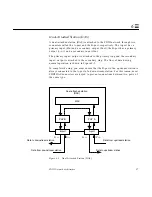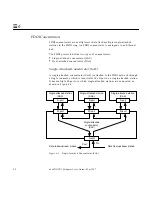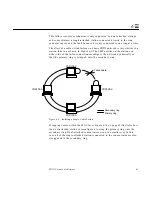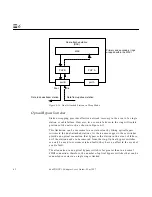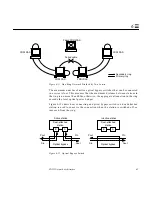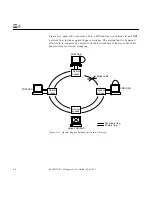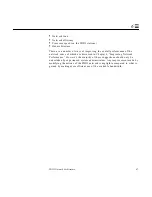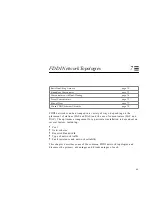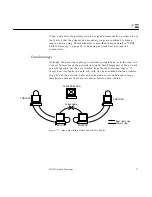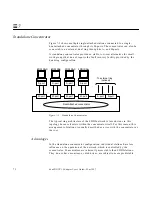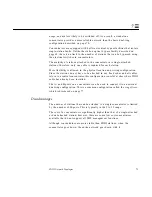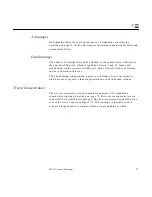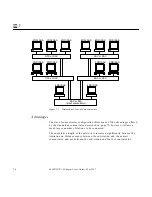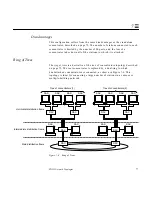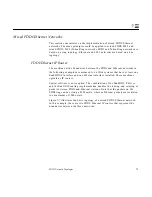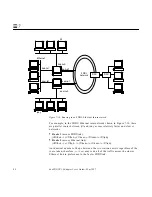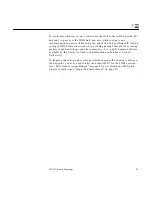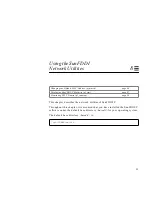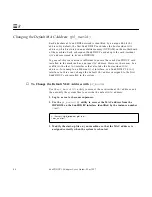
FDDI Network Topologies
71
7
When a ring fails, the primary ring is wrapped automatically on either side of
the fault so that the primary and secondary rings are combined to form a
single, one-way ring. This mechanism is described in more detail in “FDDI
Failure Recovery” on page 60. A dual-ring network does not require a
concentrator.
Disadvantages
Although the dual-ring topology is resistant to single failures in the ring, two
or more failures break the network into parts. Small fragments of the network
can still function, but they are isolated from the other stations. Figure 7-2
shows how two faults in a network, with five dual-attached stations, isolates
two parts of the network. Cable and connection costs can be high in large
installations because there are two cables between each station.
Figure 7-2
Basic Dual-Ring Network with Two Faults
FDDI DAS
FDDI DAS
FDDI DAS
FDDI DAS
Failed cable
Failed FDDI DAS
Primary ring
Secondary ring
Summary of Contents for 1.0
Page 13: ...Contents xiii Glossary 141 Index 147 ...
Page 14: ...xiv SunFDDI P 1 0 Adapter User s Guide May 1997 ...
Page 18: ...xviii SunFDDI P 1 0 Adapter User s Guide May 1997 ...
Page 25: ...Part1 InstallingandConfiguring SunFDDI P ...
Page 26: ......
Page 36: ...10 SunFDDI P 1 0 Adapter User s Guide May 1997 2 ...
Page 58: ...32 SunFDDI P 1 0 Adapter User s Guide May 1997 4 ...
Page 73: ...Part2 PlanningandImplementing SunFDDINetworks ...
Page 74: ......
Page 94: ...68 SunFDDI P 1 0 Adapter User s Guide May 1997 6 ...
Page 110: ...84 SunFDDI P 1 0 Adapter User s Guide May 1997 7 ...
Page 128: ...102 SunFDDI P 1 0 Adapter User s Guide May 1997 8 ...
Page 144: ...118 SunFDDI P 1 0 Adapter User s Guide May 1997 9 ...
Page 150: ...124 SunFDDI P 1 0 Adapter User s Guide May 1997 10 ...
Page 166: ...140 SunFDDI P 1 0 Adapter User s Guide May 1997 A ...
Page 172: ...146 SunFDDI P 1 0 Adapter User s Guide May 1997 ...
Page 182: ......

